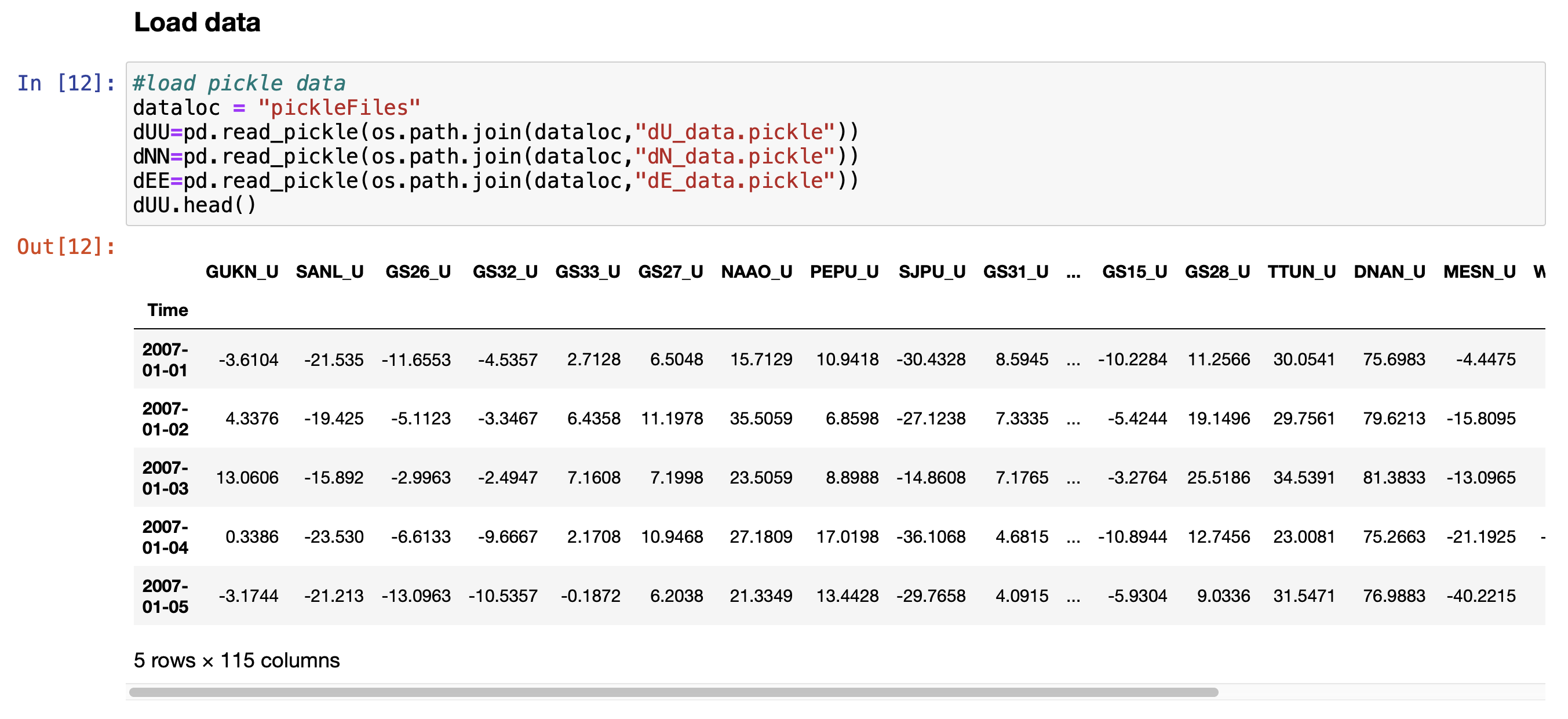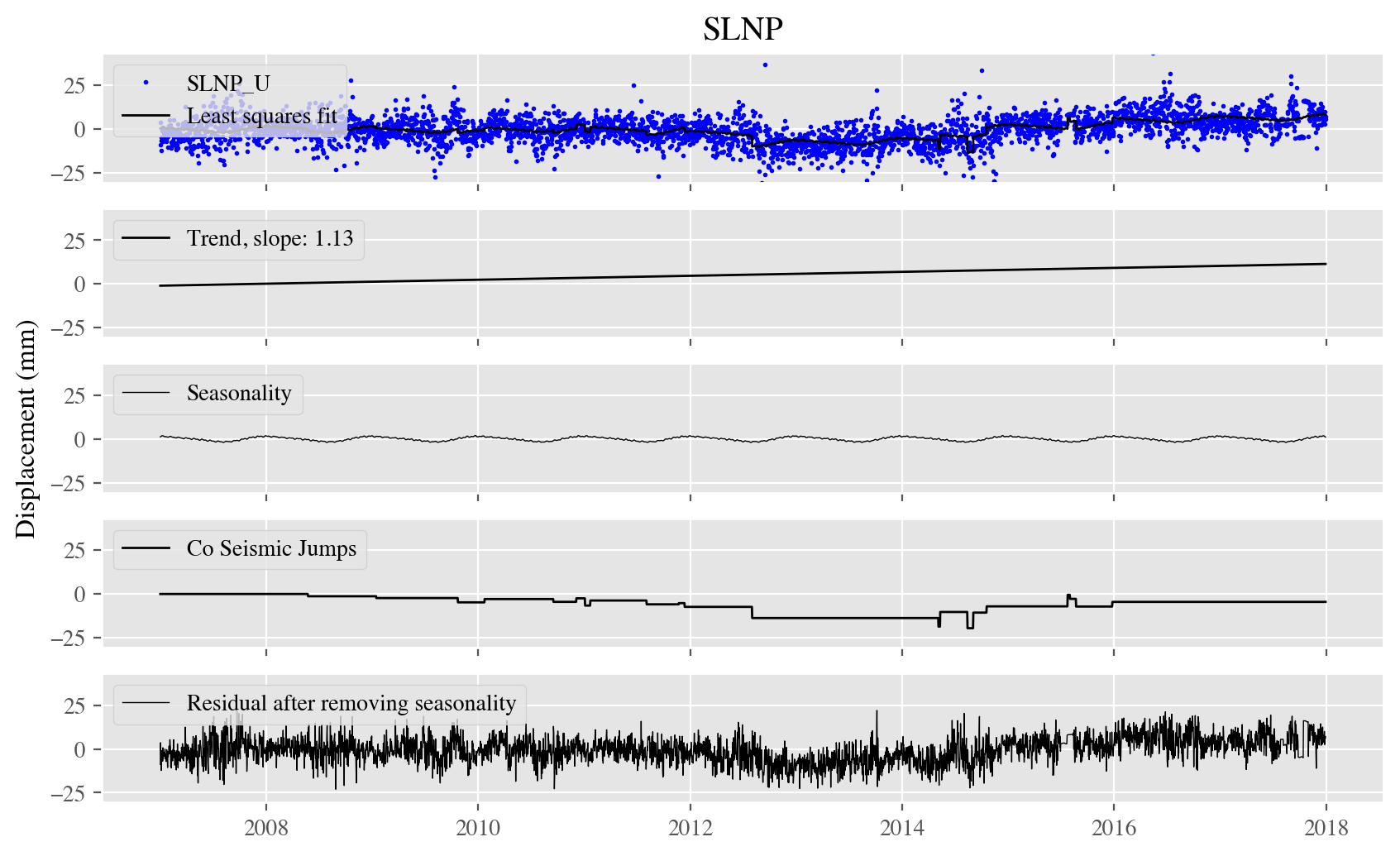- For details, see the research paper: On analyzing GNSS displacement field variability of Taiwan: Hierarchical Agglomerative Clustering based on Dynamic Time Warping technique
- Codes to perform Dynamic Time Warping Based Hierarchical Agglomerative Clustering of GPS data
Installation and usage information can be obtained from the documentation: dtwhaclustering.pdf
Complete documentation at: dtwhaclustering-docs
This package include codes for processing the GPS displacement data including least-square modelling for trend, co-seismic jumps, seasonal and tidal signals. Finally, it can be used to cluster the GPS displacements based on the similarity of the waveforms. The similarity among the waveforms will be obtained using the DTW distance.
from dtwhaclustering.leastSquareModeling import lsqmodeling
final_dU, final_dN, final_dE = lsqmodeling(dUU, dNN, dEE,stnlocfile="helper_files/stn_loc.txt", plot_results=True, remove_trend=False, remove_seasonality=True, remove_jumps=False)
from dtwhaclustering import plot_stations
plot_stations.plot_station_map(station_data = 'helper_files/selected_stations_info.txt', outfig=f'{outloc}/station_map.pdf')
slopeFile=f'stn_slope_res_U.txt'
df = pd.read_csv(slopeFile, names=['stn','lon','lat','slope'], delimiter='\s+')
plot_linear_trend_on_map(df, outfig=f"Maps/slope-plot_U.pdf")
Note: slopeFile is obtained from lsqmodeling.
from dtwhaclustering.dtw_analysis import dtw_signal_pairs, dtw_clustering
import numpy as np
from scipy import signal
import matplotlib.pyplot as plt
np.random.seed(0)
# sampling parameters
fs = 100 # sampling rate, in Hz
T = 1 # duration, in seconds
N = T * fs # duration, in samples
# time variable
t = np.linspace(0, T, N)
SNR = 0.2 #noise
XX0 = np.sin(2 * np.pi * t * 7+np.pi/2) #+ np.random.randn(1, N) * SNR
XX1 = signal.sawtooth(2 * np.pi * t * 5+np.pi/2) #+ np.random.randn(1, N) * SNR
# XX1 = np.abs(np.cos(2 * np.pi * t * 3)) - 0.5
s1, s2 = XX0, XX1
dtwsig = dtw_signal_pairs(s1, s2, labels=['S1', 'S2'])
dtwsig.plot_signals()
plt.show()
dtwsig.plot_matrix(windowfrac=0.6, psi=None) #Only allow for shifts up to 60% of the minimum signal length away from the two diagonals.
plt.show()
- Kumar, U., Chao, B.F., Chang, E.T.-Y.Y., 2020. What Causes the Common‐Mode Error in Array GPS Displacement Fields: Case Study for Taiwan in Relation to Atmospheric Mass Loading. Earth Sp. Sci. 0–2. https://doi.org/10.1029/2020ea001159
- Kumar, U., Cédric. P. Legendre, Jian-Cheng Lee, Li Zhao, Benjamin Fong Chao (2022) On analyzing GNSS displacement field variability of Taiwan: Hierarchical Agglomerative Clustering based on Dynamic Time Warping technique Computers & Geosciences, 105243. https://doi.org/10.1016/j.cageo.2022.105243
- Kumar, U., Legendre, C.P. (2022) Crust-mantle decoupling beneath Afar revealed by Rayleigh-wave tomography Sci Rep 12, 17036 https://doi.org/10.1038/s41598-022-20890-5
© 2021 Utpal Kumar
Licensed under the Apache License, Version 2.0

